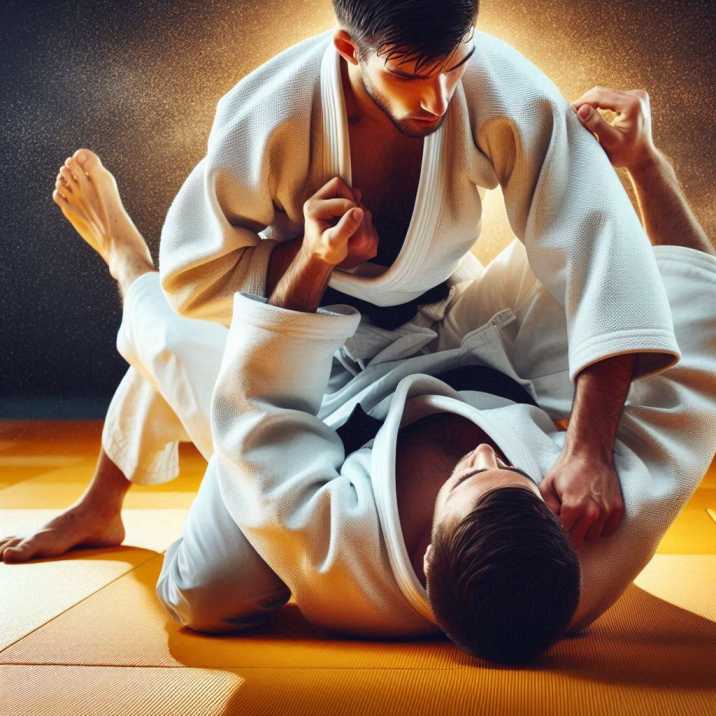The Rules of Judo Competition
Table of Contents
Judo is a dynamic and intricate martial art with a rich tapestry of rules and traditions. Understanding the nuances of Judo competition enhances not only one’s enjoyment of the sport but also fosters a deeper appreciation for its history and culture. In this comprehensive guide, we delve into the rules of Judo competition like the scoring system, penalties, types of competitions, techniques, etiquette, organizations, and Judo’s significance in the Olympic arena.

Introduction to Judo
Judo, which means “gentle way,” is a martial art and Olympic sport originating from Japan. It was created by Jigoro Kano in 1882 and has since become popular worldwide. Judo focuses on throwing techniques, ground grappling, and submissions. Competitors, known as judokas, wear a gi (a special uniform) and aim to score points by executing techniques effectively and with control.
History and Philosophy of Judo
Jigoro Kano developed Judo from traditional Japanese jujutsu. He aimed to create a martial art that would not only be effective in combat but also promote moral and physical education. Kano emphasized principles such as maximum efficiency with minimum effort (seiryoku zenyo) and mutual welfare and benefit (jita kyoei).
Scoring System in Judo
Understanding how points are awarded in Judo is crucial for both competitors and spectators.
1. Ippon
Ippon is the highest score a judoka can achieve and it immediately ends the match. It is awarded for:
- Perfect Throw: When a judoka throws their opponent on their back with force, speed, and control.
- Submission: Forcing the opponent to tap out by applying a choke or joint lock.
- Pinning: Holding the opponent down on their back for 20 seconds.
2. Waza-ari
Waza-ari is awarded for a throw that is not quite perfect but still shows good technique and control. It can also be given for holding the opponent down for 10 to 19 seconds. Two waza-ari scores equal an ippon, thus ending the match.
3. Yuko
In past competitions, yuko was a lesser score for throws and holds that did not qualify as waza-ari or ippon. However, yuko is no longer used in official Judo competitions.
4. Golden Score
If the match ends in a tie, it goes into Golden Score overtime. The first judoka to score any point (ippon or waza-ari) wins the match.
Penalties in Judo
Penalties in Judo ensure fair play and safety.
1. Shido
Shido is a minor penalty for minor rule infringements, such as:
- Passivity: Not attacking or avoiding the fight.
- False Attacks: Making attacks with no real intent to throw.
- Grip Breaking: Breaking the opponent’s grip in an unfair manner.
Three shidos result in a Hansoku-make, which disqualifies the judoka from the match.
2. Hansoku-make
Hansoku-make is a severe penalty for serious rule violations, like:
- Dangerous Techniques: Using moves that can cause injury.
- Grabbing the Opponent’s Leg: Unless part of a proper throw.
- Disrespectful Behavior: Showing unsportsmanlike conduct.
A direct hansoku-make results in immediate disqualification from the match.
Types of Judo Competitions
Judo competitions come in various forms, each with unique rules and formats.
1. Individual Competitions
Individual competitions are the most common and focus on single judokas competing against each other in different weight categories.
2. Team Competitions
In team competitions, groups of judokas compete against other teams. Each team member fights a match, and the team with the most victories wins.

3. Kata Competitions
Kata competitions involve demonstrating pre-arranged sequences of techniques. These are judged on precision, form, and execution.
4. Open Weight Competitions
These competitions do not restrict competitors by weight, allowing judokas of different sizes to compete against each other.
5. Mixed-Gender Competitions
Some events feature mixed-gender teams, promoting inclusivity and diversity in the sport.
Judo Techniques
1. Throws (Nage-waza)
Judo is renowned for its dynamic throwing techniques, known as nage-waza. Some popular throws include:
- Seoi-nage: A shoulder throw where the judoka grabs their opponent’s lapel and sleeve, then throws them over their shoulder.
- Osoto-gari: A major outer reap, where the judoka sweeps their opponent’s leg from the outside.
- Uchi-mata: An inner thigh throw, where the judoka lifts their opponent’s leg and throws them over their hip.
2. Groundwork (Ne-waza)
In addition to throws, Judo also involves groundwork techniques, called ne-waza. These include:
- Osaekomi-waza: Holding techniques used to control the opponent on the ground.
- Shime-waza: Strangling techniques applied to the opponent’s neck.
- Kansetsu-waza: Joint-locking techniques targeting the opponent’s elbow or wrist.
Judo Etiquette and Rituals
1. Rei (Bow)
Before and after each match, judokas bow to each other as a sign of respect.
2. Tachi-waza and Ne-waza
Matches start with both judokas standing (tachi-waza). If the match goes to the ground (ne-waza), it continues until one judoka scores or the referee resets them standing.
3. Judogi (Uniform)
Competitors wear a traditional uniform called a judogi, which consists of a jacket, pants, and belt. The belt color signifies the judoka’s rank.
Judo Organizations
1. International Judo Federation (IJF)
The IJF is the international governing body for Judo, responsible for organizing world championships and setting competition rules.
2. USA Judo
USA Judo is the national governing body for Judo in the United States, promoting the sport at all levels and organizing competitions and events.
Judo in the Olympics
Judo has been an Olympic sport since 1964, with both men’s and women’s competitions. Athletes from around the world compete for gold, silver, and bronze medals in various weight categories.
Tips for Beginners
1. Start with the Basics
Focus on learning the fundamental techniques and principles before attempting more advanced moves.
2. Consistent Practice
Regular practice is key to improving your skills and understanding of Judo.
3. Respect and Discipline
Embrace the values of respect, discipline, and humility both on and off the mat.
4. Find a Good Dojo
Join a reputable dojo with experienced instructors who can guide you through your Judo journey.
Information Table about Rules of Judo Competition
| Term ( Rules of Judo) | Definition |
|---|---|
| Ippon | Highest score, ends the match immediately. |
| Waza-ari | Partial score; two equal an ippon. |
| Shido | Minor penalty for minor rule infringements. |
| Hansoku-make | Severe penalty leading to disqualification. |
| Golden Score | Overtime where the first point wins. |
Conclusion
In conclusion, what are the rules of judo competition, Judo is a fascinating and complex martial art with rich traditions and rules. Understanding the scoring system, penalties, and different types of judo competitions can enhance your appreciation of the sport. Whether you are a participant or a fan, knowing these rules will help you enjoy Judo to its fullest.
FAQs
1. What is an ippon in Judo?
An ippon is the highest score, awarded for a perfect throw, a successful submission, or holding the opponent down for 20 seconds.
2. How many shidos lead to disqualification?
Three shidos result in disqualification from the match.
3. What is Golden Score?
Golden Score is an overtime period where the first judoka to score wins the match.
4. What are kata competitions?
Kata competitions involve performing pre-arranged sequences of Judo techniques judged on accuracy and form.
5. Can judokas grab their opponent’s legs?
Grabbing the opponent’s legs is generally prohibited unless it’s part of a valid throw, and violating this rule can result in a penalty.


